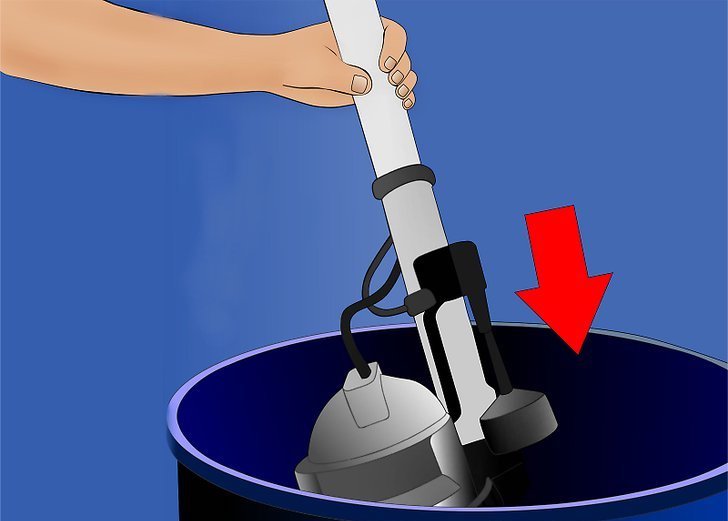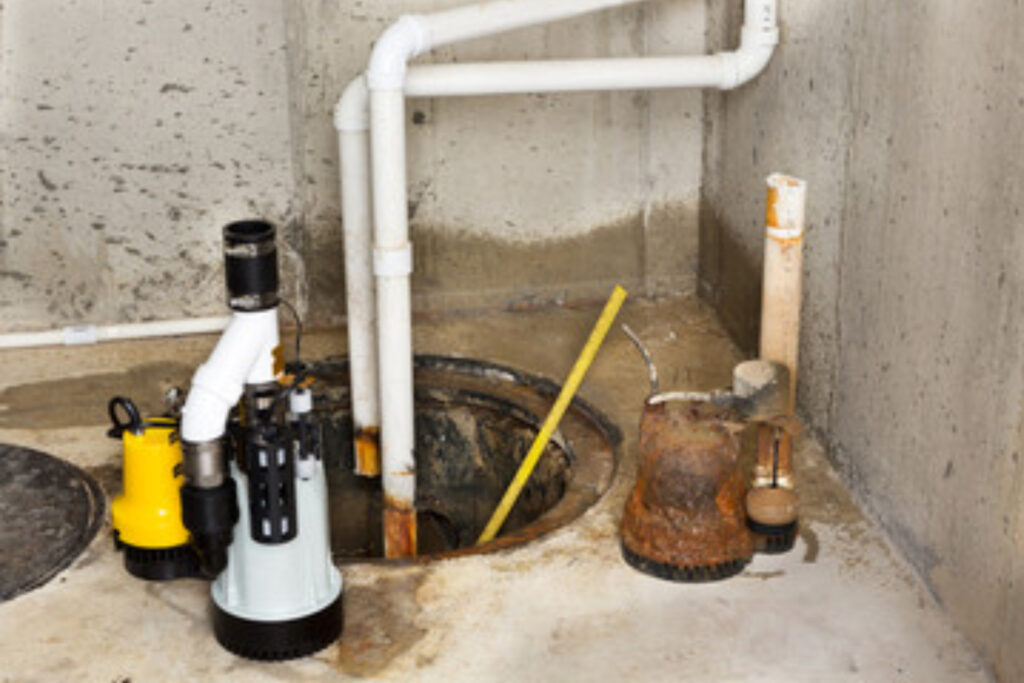This post following next relating to Steps to Cleaning Your Sump Pump Properly is immensely intriguing. You should read it.

Sump pumps are important elements in numerous homes, particularly in areas susceptible to flooding or excessive wetness. They help prevent water damages by efficiently removing excess water from cellars or crawl spaces. Nevertheless, like any other appliance, sump pumps require normal upkeep to ensure they function properly when required the most. Cleansing your sump pump is a vital part of its upkeep, and recognizing how to do it appropriately can conserve you from costly fixings and potential disasters.
Intro
Keeping a tidy sump pump is crucial for its proper performance and long life. Ignoring this essential job can result in clogs, breakdowns, and eventually, water damage to your residential or commercial property. As a result, learning just how to clean a sump pump is vital for house owners that depend on these gadgets to keep their cellars dry and secured.
Indicators of a Dirty Sump Pump
Recognizing when your sump pump requires cleansing is essential for stopping possible breakdowns. Some common signs that indicate an unclean sump pump consist of weird sounds throughout operation, minimized water flow, and visible particles in the pit. If you see any of these signs, it's important to clean your sump pump immediately to prevent any kind of additional concerns.
Planning for Cleaning
Prior to you begin cleaning your sump pump, it's necessary to take some security precautions. Beginning by turning off the power to the pump to avoid any type of electrical accidents. Furthermore, put on proper safety gear, such as handwear covers and goggles, to secure on your own from dust, particles, and potential microorganisms.
Comprehending the Sump Pump
Prior to diving right into the cleansing procedure, it's necessary to have a basic understanding of just how a sump pump functions. Typically installed in a pit or basin listed below the basement flooring, a sump pump includes numerous crucial elements, consisting of a pump, a float switch, and a discharge pipeline. When water collects in the pit, the float button activates the pump, which then pumps the water out via the discharge pipe, away from the building's structure.
Detailed Overview to Cleansing a Sump Pump
Shutting Off the Power
Begin by disconnecting the power supply to the sump pump to avoid any crashes while cleansing.
Checking for Proper Performance
Before re-installing the pump, do a fast examination to ensure that the float switch turns on the pump correctly. Pour some water into the sump pit and observe the pump's operation. If whatever is working properly, you can rebuild the pump and reconnect the power supply.
Getting Rid Of Particles and Dirt
Utilize a container or a scoop to remove any kind of visible particles, dust, or sediment from the sump pit. Dispose of the debris appropriately to avoid it from clogging the pump or the discharge pipeline.
Cleaning up the Pump and Drift Switch
Once the pit is clear of debris, very carefully get rid of the pump from the pit. Inspect the pump and the float switch for any type of indicators of damage or wear. Use a soft brush or fabric to clean up the surface areas and eliminate any type of accumulated grime.
Flushing the System
After cleaning up the pump and float switch, flush the sump pit with tidy water to eliminate any type of remaining dirt or debris. This will certainly assist make sure that the pump operates efficiently and effectively.
Maintenance Tips to Keep Your Sump Pump Clean
In addition to periodic cleansing, there are several upkeep ideas you can follow to keep your sump pump in optimal condition:
- Routine Evaluation: Check your sump pump routinely for any indicators of wear, damage, or blockages.
- Keeping the Surrounding Location Clean: Guarantee that the area around the sump pit is without debris, dirt, and obstructions.
- Checking the Pump Occasionally: Test your sump pump periodically by pouring water right into the pit and observing its procedure. This will certainly assist you determine any prospective issues prior to they rise.
Verdict
Cleaning your sump pump is an essential aspect of its upkeep and guarantees that it operates effectively when you require it one of the most. By complying with the actions described in this overview and integrating regular upkeep right into your routine, you can expand the life-span of your sump pump and protect your home from water damage.
6 STEPS ON HOW TO CLEAN A SUMP PUMP PROPERLY
UNDERSTANDING SUMP PUMPS
Your sump pump plays a crucial role in protecting your home by managing and removing excess water. It primarily functions as a “shield”, guarding your basement against the damaging effects of water accumulation. The pump is housed in a sump pit in the lowest part of your basement, and its job is to pump out any water that collects there.
During heavy rainfalls or when snow melts rapidly, water can infiltrate your basement, posing potential risks like flooding, structural damage, and harmful mold growth. Here, the sump pump springs into action, pumping out the intruding water and directing it away from your home.
SAFETY FIRST
Before cleaning, remember to prioritize safety. Disconnect the sump pump from the power source to prevent any accidental electric shocks. Also, wear sturdy gloves to protect your hands from any sharp or dirty components within the pump.
REMOVE THE SUMP PUMP
After ensuring your safety, the next step is to remove the sump pump from its pit. Doing this might require careful maneuvering as you don’t want to damage any pump components. Once removed, clean the sump pit to remove any accumulated debris or sludge.
INSPECT THE PUMP
Inspect the pump for any visible signs of wear or damage. Check the power cord, float switch, and impeller housing. If any components look worn out or damaged, consider replacing them to ensure optimal performance.
CLEAN THE PUMP
Thoroughly clean the pump with warm, soapy water. Make sure to rid it of any dirt, gravel, or other debris that might impede its performance. You can use a toothbrush to clean the small, hard-to-reach parts of the pump.
REINSTALL THE SUMP PUMP
- Reinstall the pump into the sump pit
- Make sure it’s positioned correctly to remove the water effectively
- Once it’s back in place, reconnect it to the power source
TEST THE PUMP
Finally, pour some water into the pit to ensure the pump works correctly. It should start automatically and begin pumping out the water; if it doesn’t, check the power source and the positioning of the pump.
Remember, while cleaning your sump pump is an essential part of home maintenance, hiring a professional plumber for a thorough inspection and cleaning at least once a year is also important. This will ensure that your pump is in optimal condition, ready to protect your home from potential water damage.
BEST PRACTICES FOR CLEANING SUMP PUMP DISCHARGE PIPES
- Regular Inspection: Regularly inspect your discharge pipes, especially during heavy rainfall or snowmelt periods. Look for any signs of blockage or damage. Early detection of problems can prevent serious issues down the line.
- Periodic Cleaning: Over time, sediment and debris can accumulate in the discharge pipes, impeding the flow of water. Regular cleaning helps keep the pipes clear and functioning efficiently. You can use a high-pressure water jet to effectively clean the pipes.
- Insulation During Winter: In colder climates, discharge pipes can freeze, blocking the outflow of water. Protect your discharge pipes from freezing temperatures by insulating them with foam pipe insulation. This will ensure the sump pump can continue to discharge water even in freezing conditions.
- Proper Positioning: The discharge pipe should be positioned to direct water away from your home’s foundation. Improper positioning can lead to water seeping back into the basement. Ensure the pipe is long enough and angled correctly.
- Installation of a Check Valve: A check valve prevents water from flowing back into your sump pit after the pump has pushed it out. Installing a check valve helps maintain the efficiency of your sump pump and reduces the risk of flooding.
- Minimize Pipe Turns: Every curve or turn in the discharge pipe can decrease the efficiency of water flow. By minimizing turns and bends in your discharge pipe, you can increase the efficiency of your sump pump.
https://www.fullspeedplumbing.com/how-to-clean-a-sump-pump-properly9999/

Do you appreciate more info about Cleaning & Maintenance Tips for Your Home's Sump Pump? Leave feedback below. We will be pleased to know your feelings about this page. We hope that you visit us again before long. If you please set aside a second to share this article if you enjoyed it. Many thanks for going through it.
Visit Our Website
Comments on “Recommended Steps for Servicing Your Sump Pump”